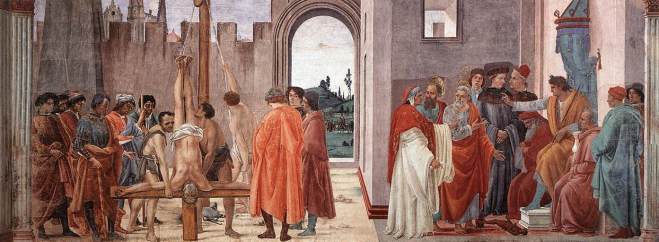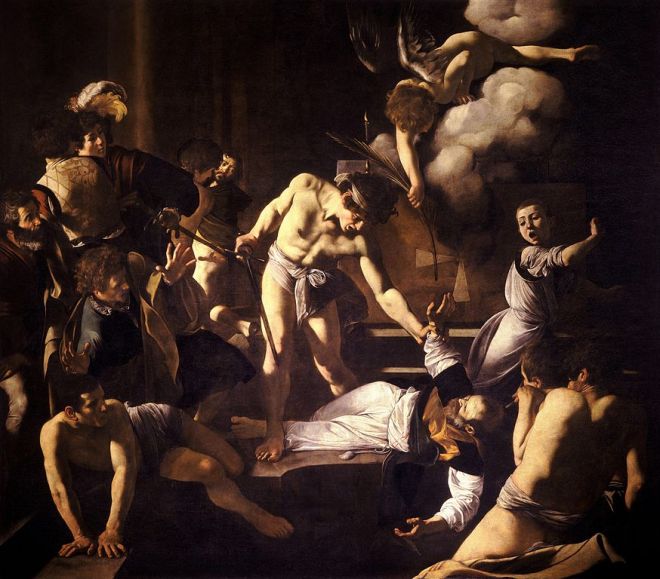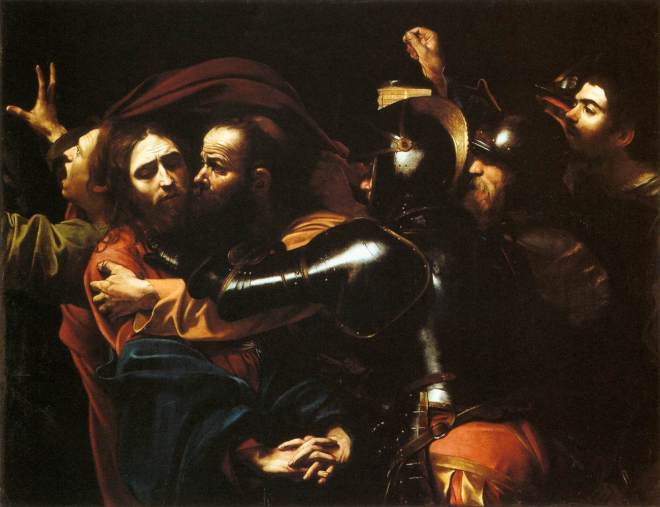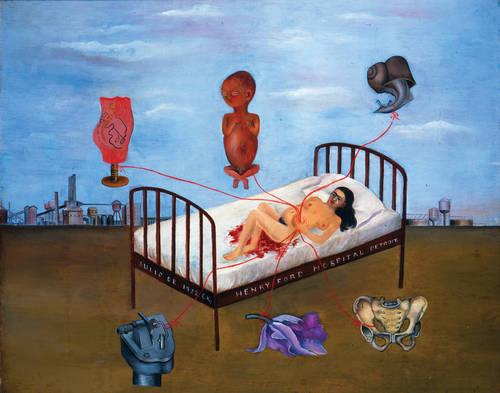Beijing, 19 January 2014
There is a phenomenon which my wife and I both agree is on the upswing in China, which is the taking of selfies. We are proud to know this word, by the way, which is so new that it hasn’t made it yet into the Merriam-Webster on-line dictionary – although the Urban dictionary, which is obviously hipper, does contain a definition: “pictures taken of oneself while holding the camera at arm’s length”. We might know what the word means, but it doesn’t mean that we approve. We actually find it sad to see young women (it seems to be preponderantly young women) taking photos of themselves. It is so narcissistic, we cry!
But actually the phenomenon is not new, its amplitude is. New technology – the mobile phone with built-in camera – and its fantastic, phenomenal, global dissemination have allowed this. But the picture-makers of old – artists – have been making selfies for centuries now, since at least the Renaissance (in Europe anyway). They made selfies – self-portraits – to advertise their skills, or to allow them to exercise themselves without having to pay a model, or to comment on their or other people’s private lives, or in a more serious vein to explore their inner emotions. Anyone interested in the topic can go to the Wikipedia article on it. At the beginning, they seemed to be a bit shy (or maybe just cautious; prisons were nasty then), and rather than executing free-standing portraits of themselves they preferred to include themselves (and their friends, and even sometimes their enemies) in the role of modest bystanders in their paintings. Here, for instance, is a painting by Botticelli, an Adoration of the Magi, where the person on the extreme right in the yellow cloak and looking out towards the viewer is said to be the painter himself.
And here is a fresco, by Filippino Lippi, The Disputation with Simon Magus and the Crucifixion of Peter, where Lippi is the person on the extreme right of the fresco looking out towards the viewer from behind the pillar.
But after a while some artists were having none of this modesty. For instance, Velázquez put himself very obviously in what is probably his most famous painting, Las Meninas, which hangs in the Prado Museum in Madrid.
On the face of it, the painting is of the young Infanta Margaret Theresa, surrounded by her entourage of maids of honour, her chaperone, bodyguard, two dwarves and a dog. But actually, Velázquez is quite obtrusively in the painting too! You can’t fail to miss him standing behind the Infanta and working on a large canvas, looking out towards the viewer. Behind him, on the wall, is a mirror, which if you look carefully can be see to be reflecting a couple. These are the king, Philip IV, and his queen, Mariana of Austria. Aha! It is them that Velásquez’s is painting, while standing in a painting which he painted … All very clever – and quite cheeky on the part of Velázquez to put himself so central when there were all these kings, queens, and princesses around!
But in my opinion not as cheeky as Dürer, who in a self-portrait of 1500 portrayed himself as a wonderfully powerful Christ-like figure.
He was following a well-known type of painting, such as this one by the Flemish artist Jan van Eyck.
I’m always surprised by the sheer effrontery of Dürer comparing himself so obviously to Christ. And not to some meek and mild Christ either. The painting’s Latin inscription translates as “I, Albrecht Dürer of Nuremberg, portrayed myself in everlasting colours aged twenty-eight years”. Wow! Talk about someone being sure of his fame in posterity. I’m amazed that he didn’t get hauled in front of some ecclesiastical court for committing the sin of overweening pride with this painting, but apparently he didn’t.
And then there are those artists who used selfies to do a bit of character assassination. Take Cristofano Allori, an Italian painter I’d never heard of until my wife and I came across a painting of his a few years ago in the Queen’s Gallery in London. Well worth the visit, by the way; it houses part of the extensive royal art collection. The painting in question was Judith with the head of Holofernes
It’s a story from the Bible: Holofernes was a general sent by Nebuchadnezzar, King of Babylon, to wreak vengeance on various nations along the Mediterranean sea board for not having supported him. This included Israel. Holofernes is besieging a Jewish city, which is about to surrender. But it is saved when Judith, a beautiful Jewish widow, visits Holfernes in his tent, seduces him, gets him drunk and then while he’s sleeping cuts off his head. Many painters liked this subject, no doubt because of all the blood and gore; they generally painted Judith in the act of cutting off Holofernes’s head. But Allori’s take is different. There’s no violence here. The head is already off and the blood has stopped running. Judith is holding it as she would a trophy, staring all the while at the viewer with a complacently triumphant look on her face. Anyone who saw the painting at the time and knew Allori must have tittered. Because Allori painted himself as poor Holofernes while his model for Judith was his ex-mistress Maria Mazzafirri and the servant in the background helping Judith was Maria’s mother. Poor Cristofano, they must have said, that harlot Mazzafirri and that hag of a mother of hers really screwed him over, got their claws into his loot (look at that beautiful dress she’s wearing!) and then dumped him. Or maybe they thought, what the hell did the beautiful Mazzafirri see in that dolt Allori? Good for her, good riddance to bad rubbish.
Michelangelo also included himself in a very personal way in a number of his works, the most famous of which must be in the fresco of the Last Judgement in the Sistine Chapel.
In that huge drama, he painted his face on the flayed skin of St. Bartholomew (I have written about the flaying of this saint in an earlier post).
Scholars have debated the meaning of this since it was noticed in 1925. One scholar has suggested that Michelangelo was commenting on his extremely shabby and painful treatment (from his point of view) by the Pope and his minions during the painting of the Last Judgement. Amusing, along the lines of Allori’s painting, but I think other scholars are more correct when they see this as an excrutiatingly personal comment by Michelangelo on the precarious balance of his soul between salvation and damnation: it seems that the flayed skin is at an exact midpoint between the salvation of the Triumphant Christ and the horrified man who is about to be pulled into Hell. The poetry Michelangelo wrote at this time – he was also a good poet – speaks a lot about his fear for the salvation of his soul.
And suddenly the selfie is an ussie. The artist is speaking for us all.
Personally, I like more the selfie in Michelangelo’s sculpture The Deposition from the Cross, which is in Florence.
I saw the sculpture during my first trip to Italy when I was a University student (I have also mentioned this trip in an earlier post). The old man, presumably Joseph of Arimathea, is said to be a self-portrait.
A look of such sadness, such desolation he is giving the dead Christ! I was so struck by it that I remained transfixed in front of the statue. I stood there so long that someone in a group of tourists flowing by muttered to her neighbour “What’s he looking at?”
That look of intense sadness brings me to Caravaggio, who must be my most favourite painter. As I have mentioned elsewhere, I brought few books to Beijing, but one of these was the massive Caravaggio: The Complete Works by Sebastian Schütze, which I later complemented by Caravaggio: A Life Sacred and Profane, the almost detective story of his life by Andrew Graham-Dixon. Caravaggio included himself in a number of his paintings. Take his Martyrdom of Saint Matthew, one of a cycle of three paintings in the Contarelli Chapel of the Church of San Luigi dei Francesi in Rome.
The subject of the painting is the killing of Matthew, the author of one of the four Gospels. According to tradition, the saint was killed while celebrating Mass at the altar. And so we have the saint knocked to the ground, the assassin readying to deliver the fatal blow, an angel thoughtfully passing on to the saint the palm of martyrdom, and the crowd screaming and shouting and running about, the whole bathed in that chiaroscuro, that light and dark, for which Caravaggio is so famous. A great painting, although in my opinion not as good as the other two in the chapel. In any case, what interests us right now is the figure at the back, picked out by the light, seemingly making an escape but looking back at the scene. It is Caravaggio.
Why did he include himself like this? And why that look of intense sadness? Graham-Dixon suggests that Caravaggio is saying, “I am no different from these people, who stand there instead of helping Matthew, or even run away. I would have had no more courage than they. I, too, would have run away”.
So different, this look, from the expression we see on his face in an earlier painting, the Taking of Christ in the Garden of Gesthemane, which hangs in the National Gallery of Ireland in Dublin.
Caravaggio has painted the moment when Judas completes his betrayal of Jesus by kissing him in the Garden of Gesthemane, to indicate to the soldiers around him whom they should arrest. Caravaggio is the person holding the lamp at the back.
He is there to shed light on the scene, but he is also looking eagerly over the shoulders of the soldiers to get a better view. Such a wonderful metaphor for every painter, of all ages, trying hard to visualize the scene which they are planning to paint, and which they can see only darkly.
And so we get to the last of Caravaggio’s portrayals, painted late in his career. The subject is another decapitation which was very popular with painters, David’s killing of Goliath. Caravaggio himself did at least three versions of this story, more or less all of the same moment, when David grasps the head of Goliath. This last one, housed in the Galleria Borghese in Rome, is the darkest, the most tragic.
It is Caravaggio’s face we see in Goliath, as he was in the last years of his life, on the run from the law in at least two jurisdictions but also from enemies who had personal vendettas with him and were trying to kill him, desperately trying to have himself pardoned by the Pope so that he could return to Rome. It is said that Caravaggio intended the painting to be a gift to Cardinal Borghese who had the power to have him pardoned, a sort of “here is my head on a platter, please be merciful and forgive me”. And who modelled David, a David who strangely enough is not looking triumphantly at Goliath whom he has just overcome in battle, whose gaze rather is a mixture of sadness and compassion for his supposed enemy? One interpretation, which I like immensely, is that this is also Caravaggio, painted as he looked when he was a young boy! And so we have a scene where the young Caravaggio is looking on sadly at the old Caravaggio which he will become. Alas, this interpretation does not seem correct. More probably, the model is Caravaggio’s studio assistant, Cecco, looking on sadly as his master slowly falls to pieces before his eyes. And indeed Caravaggio died shortly thereafter.
Another artist whose powerful self-portraits have always fascinated me is the Mexican painter Frida Kahlo. I must say, she was almost obsessed with herself, self-portraits making up a very large proportion of her oeuvre. Here is one of them
but there is one self-portrait of hers which stands out above all the rest and which I find truly gut-wrenching, Henry Ford Hospital.
She painted it shortly after her second miscarriage, when she realized she would never be able to have the children she so desperately wanted. You see her lying in the blood of her miscarriage on her bed in the Henry Ford Hospital in Detroit (the city in the background; her husband, the Mexican painter Diego Rivera, had been given a commission there by Edsel Ford). Above her floats the baby she has just lost, a baby boy. Also floating around her are a female torso, showing the anatomical parts linked to having children, her fractured pelvis, fruit of an accident she suffered when young and which made it impossible for her to have children, medical-looking equipment used during the miscarriage, an orchid which Rivera had given her, and a snail, depicting the slow pace of her miscarriage. All are linked to her by umbilical-like bloodlines.
I finish with a self-portrait by Käthe Kollwitz, a German artist who was active before and after the First World War. It, too, is about the loss of a child, but this time of a child born. Her younger son Peter was badly wounded in the first days of the war and died in her arms a few months later. She created this woodcut just after his death. It is of her and her husband, distraught at their boy’s death
After the war, she distilled this image into a pair of statues, Grieving Parents, which stand in the German War cemetery at Vladslo in Belgium (I have written an earlier post about these cemeteries).
The two figures are based on Käthe and her husband Karl
They represent all the parents of the young men buried in the cemetery
although it is said that Karl is gazing directly at the tomb of his son Peter.
To parents like us with children still of age to be called up, incredibly moving.
POST SCRIPTUM
A few weeks ago (June 2014), I saw with great pleasure that my favouritest of favourite cartoonists in The New Yorker magazine, Roz Chast, had made the same connection as I had between the modern selfie movement and artists’ self-portraits
______________________________
Chinese selfies: http://www.chinadaily.com.cn/slides/images/attachement/jpg/site1/20131213/b8ac6f27ada21414a28412.jpg [in http://www.chinadaily.com.cn/slides/2013-12/13/content_17172459_6.htm%5D
Botticelli – Adoration of the Magi: http://upload.wikimedia.org/wikipedia/commons/thumb/3/34/Botticelli_085A.jpg/942px-Botticelli_085A.jpg [in http://en.wikipedia.org/wiki/Adoration_of_the_Magi_of_1475_(Botticelli)%5D
Filippino Lippi-The Disputation with Simon Magus and the Crucifixion of Peter: http://www.wga.hu/art/l/lippi/flippino/brancacc/crucdisp.jpg [in http://www.wga.hu/tours/brancacc/crucif_d.html%5D
Velázquez-Las Meninas: http://upload.wikimedia.org/wikipedia/commons/thumb/3/31/Las_Meninas%2C_by_Diego_Velázquez_from_Prado_in_Google_Earth.jpg/890px-Las_Meninas%2C_by_Diego_Velá1zquez%2C_from_Prado_in_Google_Earth.jpg [in http://en.wikipedia.org/wiki/Las_Meninas%5D
Dürer-self portrait: http://upload.wikimedia.org/wikipedia/commons/thumb/f/fc/Duerer01.jpg/740px-Duerer01.jpg [in http://en.wikipedia.org/wiki/Self-Portrait_%28D%C3%BCrer%29%5D
Christ by Jan van Eyck: http://2.bp.blogspot.com/-HSgyBuOLqog/T36J0B01fsI/AAAAAAAA8Ko/yhh8A_Rq5GQ/s1600/Jan%2Bvan%2BEyck%2B%2528Flemish%2Bpainter%252C%2B1385-1441%2529%2BChrist%2B1440.jpg [in http://bjws.blogspot.com/2013/03/early-portraits-of-jesus.html%5D
Allori-Judith with the head of Holofernes: http://cdn.royalcollection.org.uk/cdn/farfuture/JPL2-m0ogCUIVnYQgnX1GLNkeFf11XoRWGNrkNMHuQk/mtime:1373966874/sites/royalcollection.org.uk/files/col/404989_255798_ORI_0_0.jpg [in http://www.royalcollection.org.uk/visit/the-queens-gallery-buckingham-palace%5D
Michelangelo-last judgement: http://upload.wikimedia.org/wikipedia/commons/a/a5/Michelangelo,_Giudizio_Universale_02.jpg [in http://en.wikipedia.org/wiki/The_Last_Judgment_(Michelangelo)%5D
Michelangelo-last judgement-detail: http://upload.wikimedia.org/wikipedia/commons/c/cf/Last_judgement.jpg [in http://en.wikipedia.org/wiki/Self-portrait%5D
Michelangelo-Deposition: http://upload.wikimedia.org/wikipedia/commons/thumb/c/c6/Pieta_Bandini_Opera_Duomo_Florence_n01.jpg/680px-Pieta_Bandini_Opera_Duomo_Florence_n01.jpg [in http://en.wikipedia.org/wiki/The_Deposition_(Michelangelo)%5D The sculpture is housed in the Museo dell’Opera del Duomo in Florence.
Michelangelo-Deposition-detail: http://www.bc.edu/bc_org/avp/cas/fnart/art/ren_italy/sculpture/10_97_5_30.jpg [in http://www.bc.edu/bc_org/avp/cas/fnart/art/ren_italy/ren_sculpture01.html%5D
Caravaggio-Martyrdom of St Matthew: http://upload.wikimedia.org/wikipedia/commons/thumb/5/57/The_Martyrdom_of_Saint_Matthew-Caravaggio_(c._1599-1600).jpg/874px-The_Martyrdom_of_Saint_Matthew-Caravaggio_(c._1599-1600).jpg [in http://en.wikipedia.org/wiki/The_Martyrdom_of_Saint_Matthew_(Caravaggio)%5D
Caravaggio-Martyrdom of St Matthew-detail: http://caravaggista.com/wp-content/uploads/2013/09/matthew-sp.jpg [in http://caravaggista.com/2013/09/happy-birthday-caravaggio-2013/%5D
Caravaggio-Taking of Christ: http://upload.wikimedia.org/wikipedia/commons/e/e6/Caravaggio_-_Taking_of_Christ_-_Dublin.jpg [in http://en.wikipedia.org/wiki/The_Taking_of_Christ_(Caravaggio)%5D
Caravaggio-Taking of Christ-detail: http://caravaggista.com/wp-content/uploads/2012/05/Screen-shot-2012-05-25-at-12.49.30-PM.png [in http://caravaggista.com/2012/05/caravaggio-the-leader/%5D
Caravaggio-David with Goliath: http://upload.wikimedia.org/wikipedia/commons/6/60/Caravaggio_-_David_con_la_testa_di_Golia.jpg [in http://en.wikipedia.org/wiki/David_with_the_Head_of_Goliath%5D
Frida Kahlo-self portrait: http://upload.wikimedia.org/wikipedia/en/1/1e/Frida_Kahlo_%28self_portrait%29.jpg [in http://en.wikipedia.org/wiki/Frida_Kahlo%5D
Frida Kahlo-Henry Ford Hospital: http://0.tqn.com/d/arthistory/1/7/Q/1/1/Frida-Kahlo-Henry-Ford-Hospital-1932.jpg [in http://arthistory.about.com/od/from_exhibitions/ig/frida_kahlo/fk200708_03.htm%5D
Käthe Kollwitz-grieving parents-woodcut: http://scattergoodmoore.files.wordpress.com/2012/03/grieving-parents.jpg [in http://scattergoodmoore.wordpress.com/category/kollwitz/%5D
Käthe Kollwitz-grieving parents-statues-1: http://www.judithdupre.com/wp-content/uploads/2010/07/Mourning-Parents-kollwitz2-e1278340988804.jpg [in http://www.judithdupre.com/books/full-of-grace/full-of-grace-gallery/%5D
Käthe Kollwitz-grieving parents-statues-2: http://static.panoramio.com/photos/large/1536597.jpg [in http://www.panoramio.com/photo/1536597%5D
Käthe Kollwitz-grieving parents-statues-3: http://www.eyes-and-ears.co.uk/squaredog/images/kollwitz_rear.jpg [in http://www.eyes-and-ears.co.uk/squaredog/details.asp?Title=The%20Art%20of%20Remembrance%5D






















